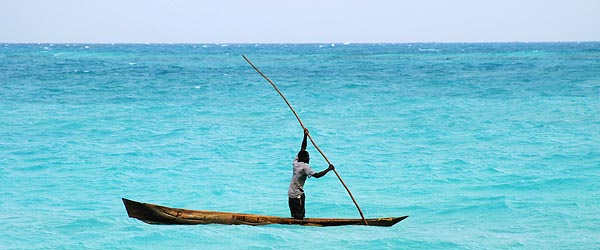Introduction to Zanzibar

Zanzibar is a semi-autonomous part of the United Republic of Tanzania in East Africa. Its origins have been traced back 5,000 years. Zanzibar Archipelago is located in the Indian Ocean 25 to 50 kilometers from the mainland. It consists of two large islands, Unguja and Pemba, as well as several smaller islands. Unguja is the main island and is referred to as Zanzibar. This was used as a base for the Persians voyages between the Middle East, India, and Africa until the Portuguese Empire gained control of the area. They kept control for 200 years.
In 198, Sultanate of Oman gained control and developed an economy of trade and cash crops. In was in this time that Zanzibar became known worldwide for spices and slavery. When the British took control in the 19th century, the political movement abolished the slave trade. Zanzibar remained in British control until December 1963 when it gained its independence. Shortly after, the Zanzibar Revolution took place and many Arabs and Indians were killed in a genocide while thousands more were driven out. This was the beginning of the Republic of Zanzibar and Pemba.
With this long reaching history, there are many magnificent sites to be seen, making it a terrific place for tourists. The area has beautiful sandy beaches and coral reefs that are perfect for snorkeling and scuba diving. North Coast is the best place to do this. North Coast is also home of a turtle sanctuary for injured marine life.
One of the oldest buildings is the 12th century mosque, Kizimkazi Mosque. It is the earliest evidence of Islam in East Africa. This is located on the south part of the island. Another great place to visit is Stone Town. It is the only functioning ancient town in East Africa and a World Heritage Site. It is also called Mji Mkongwe, which is Swahili for Old Town. Stone Town has extensive historical and artistic importance that can be seen in its major historical buildings. The House of Wonders was built in 1883 as a Sultan residence. Today, it is a museum dedicated to the Swahili and Zanzibar culture.
You can also visit the spice plantations and sample the wonderful bounty. The Old Fort is a stone fortress built in the 17th century. Zanzibar is home to many museums.
The Palace Museum was built in the late 19th century for the Sultan. Today, it is a museum that displays the life of the Zanzibari royal family. You can also visit Peace Manor Museum and the Palace museum while in Stone Town. The Angelic Cathedral of Christ built at the end of the 19th century to celebrate the abolition of the slave trade. It was built on the location that once held the largest slave market in Zanzibar. The alter stands where the whipping post was. Next to the church is a monument and museum dedicated to slavery.
There are many more amazing historical sites to visit in Zanzibar. All one needs to do is wander the streets and the market to get the ancient feel of this beautiful and culturally rich area.
Photo by blhphotography on flickr